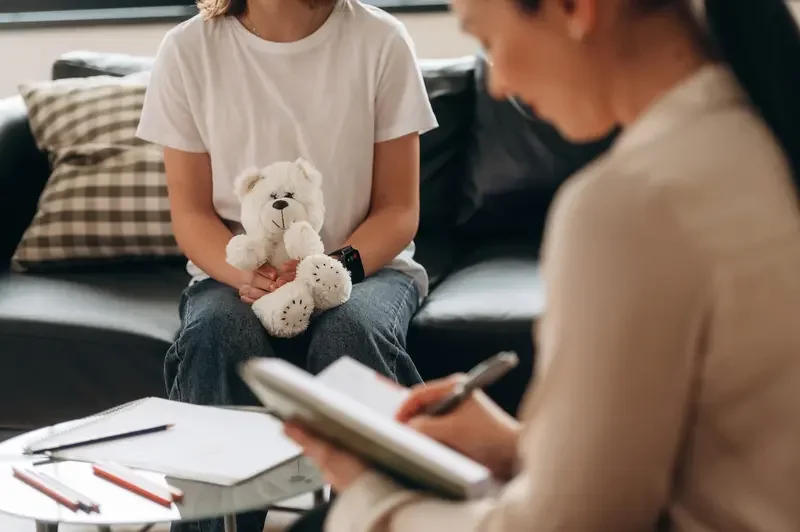Comparing Popular Child Therapy Techniques: CBT, Play, Art, and More
Table of Contents
Cognitive Behavioral Therapy (CBT): Building Emotional Awareness
Dialectical Behavior Therapy (DBT): Managing Intense Emotions
At Benjamin Psychological & Therapeutic Services, supporting a child’s emotional growth begins with understanding which child therapy techniques best fit their needs. As a parent, it can be challenging to decide which therapy approach suits your child’s age, communication style, and personal challenges.
Therapies such as Cognitive Behavioral Therapy (CBT), Play Therapy, Art Therapy, Family Therapy, Mindfulness-Based Therapy, Dialectical Behavior Therapy (DBT), and Narrative Therapy all provide distinct pathways to healing. Some focus on structured skill-building, while others encourage self-expression, creativity, or family connection.
Each method has a place in helping children understand emotions, manage stress, and develop resilience—key to thriving in today’s fast-paced and diverse environment.
Key Takeaways
Cognitive Behavioral Therapy (CBT) helps children identify and change negative thought patterns.
Play and Art Therapies allow non-verbal or younger children to express emotions safely and creatively.
Family Therapy focuses on improving communication and emotional connection at home.
Mindfulness-Based Therapy teaches present-moment awareness to manage anxiety and emotional regulation.
Dialectical Behavior Therapy (DBT) supports children struggling with intense emotions and impulsivity.
Narrative Therapy helps children reframe their stories, fostering confidence and personal meaning.
Cognitive Behavioral Therapy (CBT): Building Emotional Awareness
Cognitive Behavioral Therapy (CBT) is among the most widely used and evidence-based child therapy techniques, particularly for anxiety, depression, and behavioral challenges. CBT helps children recognize how thoughts influence emotions and actions, giving them tools to replace negative thinking with positive coping patterns.
Therapists tailor CBT to each child’s developmental stage. Younger children may use storytelling or visual tools, while older ones might engage in journaling or role-play.
Core Components of CBT
Cognitive Restructuring: Identifying and challenging negative thought patterns.
Exposure Therapy: Gradual exposure to feared situations to reduce avoidance.
Behavioral Activation: Encouraging enjoyable, rewarding activities that improve mood.
Relaxation Techniques: Breathing, mindfulness, and progressive muscle relaxation to reduce stress.
By combining these elements, CBT provides structure and measurable outcomes—making it suitable for children who benefit from guided frameworks and tangible progress tracking.
Play Therapy: Expression Through Play and Imagination
Play Therapy is a natural and child-friendly way for children to communicate emotions and experiences they may not have words for. It’s often used with children aged three to ten, especially those struggling with anxiety, trauma, or behavioral difficulties.
During sessions, children express themselves through toys, role-play, or art materials. The therapist observes and interacts through play to understand the child’s inner world.
Play Therapy helps children:
Express emotions in a safe environment.
Develop problem-solving and social skills.
Process trauma or fears through symbolic play.
Build trust and rapport with the therapist.
In multicultural Singapore, Play Therapy is particularly effective for children adapting to new environments, languages, or cultural transitions — experiences that are common in such a diverse setting.
Art Therapy: Creative Pathways to Healing
Art Therapy uses drawing, painting, sculpting, or other creative forms to help children express and explore emotions. It’s especially helpful when verbal communication feels overwhelming or insufficient.
A therapist might guide a child to “draw their safe place” or “create an image of a worry,” then gently discuss the emotions behind it. Through this process, children externalize feelings and gain new perspectives.
Benefits of Art Therapy include:
Promoting self-awareness and self-esteem.
Encouraging emotional regulation and stress reduction.
Helping children articulate complex emotions non-verbally.
Supporting trauma recovery in a gentle, creative format.
Art Therapy integrates well with CBT—offering a balance between structured thinking and free expression.
Family Therapy: Strengthening Bonds and Communication
Family Therapy focuses on improving relationships within the family system, recognizing that a child’s emotional health is deeply influenced by family dynamics. This approach brings parents, siblings, and sometimes extended family together in joint sessions.
The goal is not to assign blame but to enhance understanding and communication.
Family Therapy helps families:
Resolve conflicts in a structured, safe setting.
Improve empathy and emotional connection.
Identify and adjust patterns that contribute to stress or behavioral issues.
Strengthen parental support and consistency at home.
Professionals often integrate family-based CBT, where parents reinforce the child’s new coping skills in everyday life—creating a consistent and supportive environment for change.
Mindfulness-Based Therapy: Present-Moment Calm
Mindfulness-Based Therapy teaches children how to focus on the present moment without judgment. It’s particularly useful for managing anxiety, attention challenges, or emotional reactivity.
Therapists may guide children through short meditations, sensory awareness exercises, or mindful breathing practices. Over time, this improves attention, emotional control, and stress resilience.
Key benefits include:
Reducing anxiety and impulsivity.
Enhancing concentration and emotional balance.
Teaching calm responses to frustration or worry.
Supporting overall mental clarity and relaxation.
Mindfulness techniques can be practiced anywhere—at home, in school, or during therapy sessions—making them a flexible addition to other modalities like CBT or Art Therapy.
Dialectical Behavior Therapy (DBT): Managing Intense Emotions
Dialectical Behavior Therapy (DBT) was initially designed for older teens but has been successfully adapted for children. It combines cognitive strategies with mindfulness to help children who experience intense emotions or impulsive behaviors.
In DBT, children learn to understand emotions rather than suppress them. The therapist teaches coping skills across four key areas:
Mindfulness: Staying grounded and aware of the present moment.
Distress Tolerance: Managing crises without harmful reactions.
Emotion Regulation: Recognizing and labeling emotions accurately.
Interpersonal Effectiveness: Communicating needs and setting boundaries respectfully.
DBT is often used for children with emotional dysregulation, ADHD, or behavioral outbursts, offering structured tools to navigate emotional storms safely and productively.
Narrative Therapy: Rewriting Personal Stories
Narrative Therapy helps children make sense of their experiences by viewing themselves as the “authors” of their own stories. It’s particularly effective for children dealing with trauma, self-esteem issues, or identity struggles.
Therapists encourage children to externalize their problems (e.g., “the worry monster”)—separating the issue from their identity. This empowers them to “rewrite” their narrative, focusing on strengths, resilience, and growth.
Benefits of Narrative Therapy include:
Building confidence and self-agency.
Reducing self-blame and shame.Encouraging empathy and perspective-taking.
Helping children develop a positive, growth-oriented mindset.
In Singapore’s diverse cultural context, Narrative Therapy also allows families to integrate cultural values, stories, and heritage into the child’s healing journey.
Comparison of Child Therapy Techniques
| Therapy Technique | Best Age Range | Core Focus | Key Strengths | Ideal For |
|---|---|---|---|---|
| Cognitive Behavioral Therapy (CBT) | 6+ years | Identifying and reframing negative thoughts | Evidence-based, structured, goal-oriented | Anxiety, depression, behavior issues |
| Play Therapy | 3–10 years | Emotional expression through play | Engaging for young/non-verbal children, builds trust | Emotional regulation, trauma, social adjustment |
| Art Therapy | 5+ years | Expressing emotions through art | Non-verbal communication, boosts creativity and confidence | Emotional regulation, trauma, social adjustment |
| Family Therapy | All ages | Improving communication and relationships | Strengthens family support and understanding | Family conflict, attachment concerns |
| Mindfulness-Based Therapy | 6+ years | Developing awareness and calmness | Reduces anxiety, improves focus and emotional balance | Anxiety, ADHD, stress |
| Dialectical Behavior Therapy (DBT) | 8+ years | Managing intense emotions | Builds emotion regulation and interpersonal skills | Impulsivity, emotional outbursts |
| Narrative Therapy | 7+ years | Reframing personal stories | Promotes resilience, identity formation, and empowerment | Trauma recovery, low self-esteem |
Challenges and Considerations in Child Therapy
Accessibility
Availability of therapy services can vary depending on resources, scheduling, and demand. Telehealth sessions have made access easier for many families, particularly expatriates who may travel frequently.
Engagement
Children differ in how they engage with therapy. Combining multiple techniques—like pairing Play Therapy with CBT or mindfulness—can make sessions more enjoyable and effective.
Cultural Sensitivity
Singapore’s diverse population requires cultural awareness in therapy. Therapists must adapt language, metaphors, and exercises to align with the child’s background and family values, ensuring the approach feels safe and relatable.
Future Directions in Child Therapy Techniques
Digital Integration: Virtual reality, apps, and teletherapy expand access and engagement.
Personalized Care: Therapies increasingly adapt to each child’s learning style, personality, and progress.
School-Based Programs: Integrating therapy techniques in schools helps identify and support children early.
Collaborative Care Models: Working with parents, teachers, and healthcare providers ensures holistic support.
Child Therapy in Singapore: A Balanced Approach
At Benjamin Psychological & Therapeutic Services, every child receives therapy that honors their individuality—where structure meets creativity, and science meets empathy. Our therapists work closely with families to uncover underlying challenges, build emotional resilience, and equip children with tools to express themselves confidently in everyday life.
If you’ve noticed your child struggling with emotions, behavior, or adaptation, seeking support early can make all the difference. Our team at Benjamin Psychological & Therapeutic Services provides a safe, nurturing space where growth happens at a child’s own pace. Reach out today and take the first step toward a calmer, more confident future for your child.
Frequently Asked Questions
Which child therapy technique is most effective?
Effectiveness depends on the child’s age, personality, and emotional challenges. CBT works well for anxiety, while Play or Art Therapy suits younger children who communicate through creativity.
Can multiple therapies be combined?
Yes. Therapists often integrate different modalities (e.g., CBT and Art Therapy) to create a personalized plan that meets the child’s evolving needs.
How long does child therapy usually take?
It varies. Some children benefit from short-term therapy (8–12 sessions), while others need ongoing support depending on goals and progress.
Is parental involvement necessary?
Yes. Parents play a crucial role in reinforcing therapy skills, maintaining routines, and supporting emotional growth at home.
How do therapists ensure cultural sensitivity in Singapore?
Therapists adapt language, examples, and activities to align with a child’s cultural values and family expectations, ensuring comfort and relevance throughout the process.




